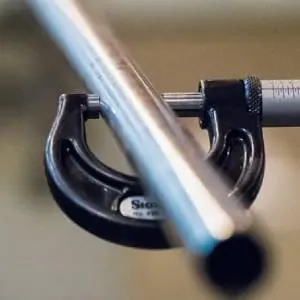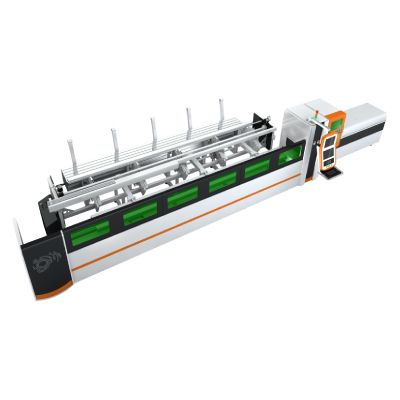In today’s fast-paced manufacturing environment, efficiency and precision are paramount. As industries evolve, so do the technologies that support them. Among the most revolutionary advancements in cutting technology is the Flatbed Laser Cutting Machine. This state-of-the-art equipment has transformed how manufacturers approach cutting processes, providing unmatched accuracy and versatility across various materials. This article will explore the benefits, applications, and impact of Flatbed Laser Cutting Machines in modern manufacturing.
Understanding Flatbed Laser Cutting Machines
A Flatbed Laser Cutting Machine is a device that utilizes a high-powered laser beam to cut, engrave, or etch materials with incredible accuracy. The term “flatbed” refers to the machine’s design, which features a flat work surface where materials are loaded and processed. This design allows for the cutting of large sheets of material, making it ideal for a range of industries such as automotive, aerospace, architecture, and metal fabrication.
The technology behind these machines typically employs CO2 or fiber lasers, with the choice depending on the material being cut. CO2 lasers are highly effective for cutting non-metal materials such as wood, plastics, and textiles, while fiber lasers are preferred for metal cutting due to their ability to produce a more concentrated beam, resulting in cleaner cuts and higher speeds.
Key Advantages of Flatbed Laser Cutting Machines
**1. Precision and Accuracy:**
One of the standout features of Flatbed Laser Cutting Machines is their remarkable precision. The focused laser beam allows for intricate designs and complex shapes to be cut with minimal tolerances. This level of accuracy is particularly beneficial in industries requiring high-quality components, such as aerospace and electronics.
**2. Versatility:**
Flatbed laser cutters can work with various materials, including metals, plastics, glass, and wood. This versatility makes them suitable for various applications—from creating prototypes to mass production runs. Furthermore, they can be easily programmed to accommodate multiple designs and specifications, enabling manufacturers to adapt quickly to changing market demands or client specifications.

Discover the Unmatched Precision and Versatility of Flatbed Laser Cutting Machines for Your Industrial Manufacturing Needs
**3. Reduced Material Waste:**
The precision cutting capabilities of these machines significantly reduce material waste. Traditional cutting methods often result in excess scrap material, increasing production costs. In contrast, laser cutting optimizes material use, resulting in cleaner cuts and less waste. This efficiency not only benefits manufacturers economically but also supports sustainability efforts by minimizing the environmental impact of the production process.
**4. Fast Production Speeds:**
Flatbed Laser Cutting Machines operate at high speeds, dramatically increasing production rates. Coupled with advanced software that allows for quick design adjustments and real-time monitoring, manufacturers can fulfill orders more rapidly while maintaining quality. This ability to produce complex shapes quickly gives companies a competitive edge in the market.
**5. Low Maintenance and Operation Costs:**
Compared to traditional cutting machines, Flatbed Laser Cutting Machines require less maintenance. The absence of physical contact between the cutting tool and the material means that wear and tear are significantly reduced. Additionally, most operations can be handled by a single operator, further lowering overall operational costs.
Applications in Various Industries
Flatbed Laser Cutting Machines have found applications in numerous industries:

Discover the Unmatched Precision and Versatility of Flatbed Laser Cutting Machines for Your Industrial Manufacturing Needs
– **Metal Fabrication:** Used to cut steel, aluminum, and other metals, laser cutting is integral to creating parts used in machinery, vehicles, and buildings.
– **Textile Industry:** Laser cutting is an excellent method for cutting patterns and designs in fabrics, offering precision that traditional methods cannot match.
– **Aerospace:** Custom components made from lightweight materials are essential in aerospace, where precision and weight reduction are critical.
– **Signage and Displays:** The ability to precisely cut intricate designs makes laser cutting perfect for creating personalized signs and displays.
Conclusion

Discover the Unmatched Precision and Versatility of Flatbed Laser Cutting Machines for Your Industrial Manufacturing Needs
In conclusion, Flatbed Laser Cutting Machines are revolutionizing the manufacturing landscape with their precision, versatility, and efficiency. They not only streamline the manufacturing process but also enable businesses to achieve higher quality results while reducing waste and costs. As technology continues to advance, these cutting machines will undoubtedly play an even more significant role in the future of manufacturing, empowering industries to meet the demands of a rapidly changing world. Embracing this technology is essential for businesses looking to remain competitive and innovative in their respective markets. Plate Cutting Machine



